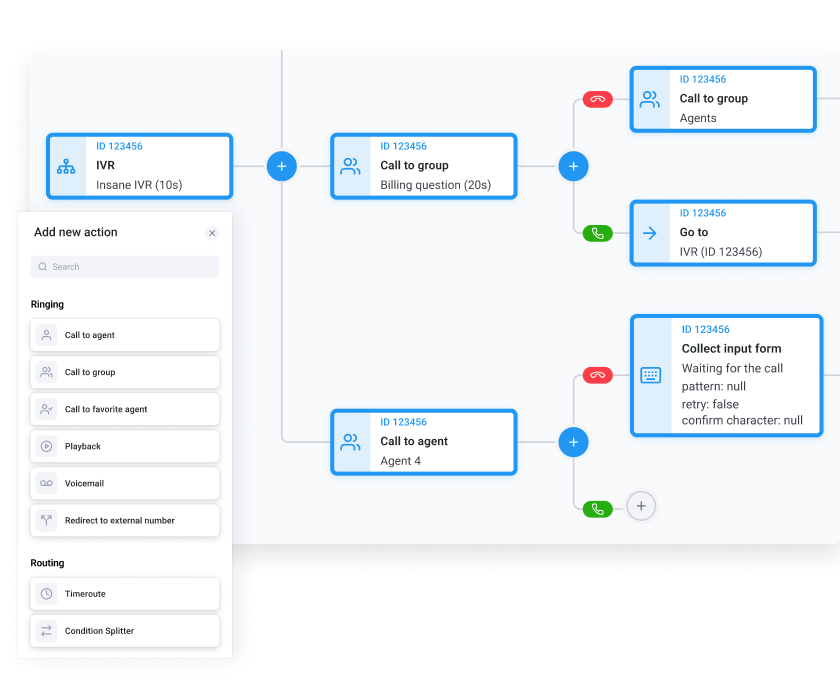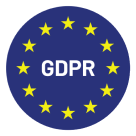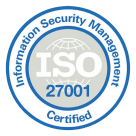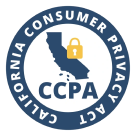
Your customer success team is swamped. Support tickets are piling up, agents are stretched thin, and your next product update is about to go live. You need to notify thousands of users fast, but email open rates are dropping, and SMS feels too impersonal.
Believe it or not, but over 50% of US consumers* still prefer phone calls for customer service interactions. However, this is not always easy to scale, especially when speed, personalization, and compliance all need to be part of the equation.
That’s where IVR blasting steps in.
In this guide, you’ll learn how to use IVR blasting to deliver time-sensitive messages. Think product updates, appointment reminders, surveys, and even emergency notifications, all without overloading your team.
You’ll also see how it fits into a feedback loop that actually improves customer engagement.
Key Takeaways:
- IVR blasting delivers time-sensitive updates by segment without draining your team’s time
- Connecting IVR blasting to your CRM and workflows helps you reach customers faster, track responses, and keep your data up to date
- CloudTalk’s Call Flow Designer makes it simple to build automated, compliant IVR campaigns without adding extra workload
Scale your customer updates
How IVR Blasting Works and Why It Matters
Remember that moment when your team needed to reach thousands of users in minutes? IVR blasting is how you make that happen without burning out your team or relying on channels that go ignored.
What Is IVR Blasting?
IVR blasting (short for Interactive Voice Response blasting), is an automated way to send pre-recorded voice messages to large groups of recipients simultaneously.
Instead of dialing each customer individually, your system delivers a consistent message to thousands of phone numbers at once. Recipients can interact using keypad inputs or voice commands.
At its core, IVR blasting is about scale. Whether you’re sending out appointment reminders, emergency alerts, promotions, or post-call surveys, it lets your team reach more people in less time.
How IVR Blasting Fits Into Automated Communication
IVR blasting works best when it’s not just a one-off message, but part of your larger communication flow. It can plug into your CRM, call routing system, or feedback tools to keep everything running smoothly in the background.
Say a customer confirms a payment or responds to an appointment reminder through an IVR call. That response can automatically update their CRM record. From there, it can trigger a follow-up email, notify an agent, or even close a support ticket.
You can also use IVR blasting to send out short surveys and collect real-time data. For example, you can capture satisfaction scores after a support call, or issue reports during an outage. That feedback loops right back into your systems, so your team can act fast and keep improving the experience.
In a way, IVR blasting connects the dots between communication, action, and insight.
Key Use Cases for IVR Blasting
IVR blasting can do a lot more than just send out updates. When used right, it becomes a powerful way to connect with customers quickly and at scale, but without losing the personal touch. Let’s take a look at the four most common (and effective) ways businesses use it today, with examples.
Customer Notifications
When people need a heads-up, whether it’s about appointments, deliveries, or schedule changes, IVR blasting gets the message across clearly and instantly.
For example, a dental clinic can send automated voice calls to remind patients about upcoming appointments, including time, location and even information about their dental membership plan. No-shows drop, and the front desk gets fewer follow-up calls.
Marketing and Promotions
Need to spread the word fast about a sale or special offer? A short voice message can cut through the noise better than an email ever could.
Let’s say a local gym wants to promote a limited-time offer on personal training. It can simply blast a quick voice message to members about it, and callers can press 1 to learn more or book a session on the spot.
Surveys and Feedback Collection
The best time to ask for feedback is right after an interaction while it’s still fresh. IVR surveys make it easy to collect that input at scale.
Maybe you’re doing business in SaaS and your tech support team successfully resolved an issue. They can send a follow-up IVR survey right after tackling it. The customer can then rate the experience, and their response is logged automatically in the system.
Emergency Alerts and Critical Communications
When something urgent comes up, speed matters. Your IVR system helps you reach a lot of people, fast. You’re meeting them where they are, so it’s more likely the message will reach them
For instance, a university can use IVR calls to alert students and staff about an unexpected campus closure, and include details on what to do next. No one’s left refreshing their inbox, and everyone’s properly informed.
Find out how to turn raw data from CSAT surveys into actionable insights that help you improve call flows and the customer journey.
Key Benefits of IVR Blasting For The Customer And Your Business
IVR blasting makes life easier for your team, but it also creates a smoother, more responsive experience for your customers. Here’s how it adds value on both sides.
Automate High-Volume Outbound Calls
Manually calling hundreds or thousands of customers just isn’t realistic, but your IVR solution handles it in minutes.
Your business can send consistent, accurate messages at scale without tying up staff. And for customers, it means they get the information they need without delays or mixed messages.
Reduce Agent Workload and Call Center Costs
Agents shouldn’t be spending their day making reminder calls or chasing confirmations. Let automation handle the routine, so your team can focus on what really needs a human touch.
This lowers operational costs and frees up agents for higher-value conversations. Customers get quicker, more reliable updates without being placed on hold.
Increase Response Rates With Timely Messaging
People ignore emails. They miss texts. But a phone call, especially one that comes at the right moment, is harder to miss.
With Interactive Voice Response, your messages are more likely to be heard and acted on. Customers get timely updates, and your team gets better engagement with fewer follow-ups.
Enhance Customer Experience With Instant Updates And Reminders
Nobody likes feeling out of the loop. With a solid IVR service, you can keep customers informed before they even need to ask.
Customers want clear and timely communication. With pre-recorded messages, you can keep them informed, prevent miscommunication, and show that your business is responsive and communicative.
Common IVR Blasting Challenges
Like any tool, IVR blasting has its challenges, especially when it’s overused or poorly implemented. Here are some of the most common issues teams run into.
And don’t worry, we’ll walk you through how to tackle these challenges in greater detail a bit later, once we discuss the implementation.
Customer Fatigue From Overuse
Just because you can reach thousands of people at once doesn’t mean you should (at least not too often). Overuse can lead to frustration, opt-outs, and a drop in message effectiveness. Use pre-recorded messages wisely.
Compliance With TCPA and PCI Standards
IVR blasting is subject to strict rules, especially under TCPA and PCI DSS. Consent, call recording, and secure data handling are important legal requirements. Getting these wrong can mean fines and reputational damage for your business.
Message Clarity and Personalization
Pre-recorded messages can come off as robotic or confusing if they’re too generic or poorly structured. If customers don’t immediately understand the point (or if the message doesn’t feel relevant), they’re less likely to engage.
Essential Features to Prioritize in an IVR Blasting System
Not all IVR blasting systems are built the same. To get the most out of your campaigns, there are a few key features you’ll want to have in place.
Flexibility in Call Routing and Campaign Management
A good IVR blasting system should send messages while giving you control over what happens next. Flexibility in IVR routing and campaign management is key to making sure your messages lead to meaningful action.
You should be able to customize call flows, segment your audience, and adjust how and when messages are delivered. For example, you might want to route high-priority cases directly to a live agent, connect customers to a self-service payment option, or trigger an automated follow-up based on how they respond.
Some systems, like CloudTalk’s intelligent call routing, make this even easier by automatically directing calls based on customer data or previous interactions.

With intelligent call routing, you’re not just blasting out information. You’re guiding each customer toward the right next step.
Integration With CRM and Other Business Tools
To get real value from IVR call blasting, it needs to work hand in hand with the tools your team already uses, starting with your CRM.
When voice broadcasting is integrated with your CRM and other business platforms, every interaction becomes part of a bigger picture.
You can automatically sync customer information between CloudTalk and third-party CRM tools
Customer responses can automatically update contact records, trigger follow-up emails, or flag high-priority cases for your team. No need for manual data entry or jumping between systems.
For example, if a customer confirms a payment or provides feedback during a voice blasting call, that information should sync instantly with their profile in your CRM. This helps your team act faster, personalize future communication, and keep everything organized in one place.
Did you know?
🧠 Did you know?
CloudTalk integrates with 10+ different CRM solutions, including HubSpot, Pipedrive, and Salesforce, allowing you to make, receive, and record calls, and keep track of all interaction within your chosen CRM tool.
Security and Compliance Considerations
When you’re reaching thousands of customers at once, protecting their data and privacy is non-negotiable. Look for automated call solutions with built-in security features and support for compliance with key regulations.
This includes safeguards like secure data storage, encryption, and access controls to protect sensitive information. It should also help you stay compliant with standards like TCPA (Telephone Consumer Protection Act) and PCI DSS (Payment Card Industry Data Security Standard), especially around consent management, call recording, and handling payment information.
CloudTalk has all the necessary certifications and complies with GDPR, CCPA, HIPAA, and more
Customization and Analytics
The next thing you should take into account is the ability to tailor your voice blasting solution and track how it performs.
A good IVR system should let you customize messages for different audiences, adjust the timing and frequency of calls, and personalize content based on customer data. The more relevant the message, the better the response.
Just as important are the analytics. You should be able to see key metrics like call completion rates, response rates, opt-outs, and customer inputs.
Did you know?
🧠 Did you know?
CloudTalk enables you to cut handling time by 40% thanks to its powerful built-in analytics.
How to Implement IVR Blasting Effectively
Knowing what IVR blasting can do is one thing. But putting it into practice the right way is another. Here’s how to set it up effectively.
H3 Set Up Workflows and Call Flows
Start by mapping out what you want each IVR campaign to achieve and what should happen after the call. This is where your call flows and workflows come in.
Think about the different paths a customer might take. Do you want them to confirm an appointment, complete a payment, or provide feedback? Plan the call flow script accordingly, including options for self-service, escalation to a live agent, or follow-up actions based on their responses.
CloudTalk’s Call Flow Designer helps you easily set up and manage the path each call will follow.
Pro tip
💡 Pro tip
Keep your call flows simple and clear. Too many options, or long messages, can confuse customers and lead to drop-offs. Aim for no more than 3-4 choices per call to keep engagement high.
Ensure Compliance With TCPA and PCI Standards
Before you launch any automated call campaign, make sure you’re playing by the rules. Regulations like TCPA and PCI DSS set strict guidelines around how you contact customers and handle their data.
Start with consent. Always get clear opt-in from customers before sending automated voice messages, and make it easy for them to opt out at any time. If your flow involves IVR payments, ensure that sensitive data is handled securely and never stored without proper protection.
Optimize Message Content and Timing
The success of your call blast campaigns depends heavily on both what you say and when you say it. Here are key three tips:
- Keep your messages short, clear, and easy to understand.
- Avoid jargon or long-winded explanations (remember that the goal is to deliver the right information quickly, so customers know exactly what action to take).
- And lastly, pay attention to timing and frequency.
Too many calls, or messages sent at inconvenient times, can frustrate customers and lead to opt-outs. Segment your large audience to make sure each message is truly relevant.
Measure Success and Refining Strategy
Once your outbound IVR campaigns are up and running, don’t just set them and forget them. Tracking performance is key to making sure your messages are actually landing and driving action.
Focus on metrics like response rates, call completion rates, and drop-off points. These numbers will show you how many customers are engaging with your calls—and where they might be losing interest or hanging up.
Reach More Customers Without The Extra Work
When email gets ignored and SMS falls flat, IVR blasting gives you a way to cut through the noise—fast.
IVR solutions give you a way to reach thousands of customers in minutes (without overloading your agents).
But like any powerful tool, these work best when used thoughtfully. From setting up smart call flows and ensuring compliance, to keeping messages clear and tracking performance, every piece matters if you want real results.
The right setup can also make a key difference—especially when CRM data syncs automatically and call flows are easy to tailor, no technical skills needed.
The next time you’re faced with a packed inbox, a product rollout, or a sudden service alert, you’ll know there’s a better way to get the message out. Zero hassle and minimum burden for your customer support team.
Scale your customer updates
Sources:














